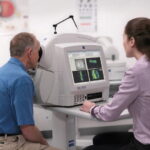Have you ever had an ultrasound before? Whether it’s for a stomachache or other conditions, it’s become an essential tool in modern medicine.
But while this non-invasive method allows doctors to peek into the body and set a diagnosis, you might wonder, what are the types? If so, you’ve come to the right place!
Here’s a comprehensive guide to the different types of ultrasound imaging to help you understand their uses and functions.
Diagnostic Sonography
Diagnostic sonography is the most common of different imaging methods. It works by emitting high-frequency sound waves that travel into the body, capturing detailed information with great precision. Then, these sound waves bounce back, creating a real-time image called a sonogram.
Since it’s a painless and non-invasive method, many doctors use this for pregnancies. Moreover, it helps healthcare professionals closely monitor the development of the baby. This way, they can provide you with valuable insights and catch problems right away.
Doppler Ultrasound
Doppler ultrasound is a technique used to capture detailed medical scans of blood flow inside your body. It does this by using something called the Doppler effect. This is to measure the speed and direction of those little blood cells as they move through vessels of all different sizes.
A Doppler ultrasound works to detect and diagnose all sorts of conditions. It can go anywhere from blood clots to a blocked artery. So, doctors must understand different issues well.
The deeper their knowledge about it, the faster and more accurately they can provide aid. Check out how onsite ultrasound training works if you’re interested in the practice.
3D and 4D Ultrasound
3D ultrasound imaging gives you a comprehensive three-dimensional image of what you’re checking out. It offers a lot more detail with results compared to other ultrasound options. But generally, it works a lot like the regular one.
4D ultrasound that it up a notch by adding movement, so it’s like watching a live video. Note that this is common for examinations that require more care. For example, watching a baby in the womb.
You also want to learn the differences between 3D and 4D ultrasound. This way, you can figure out which one fits your needs and circumstances more.
Echocardiograms
An echocardiogram or a cardiac ultrasound is a technique that studies the structure and function of the heart. It’s non-invasive, which means it doesn’t involve any surgery or anything like that. Instead, it uses sound waves to create detailed images of the heart.
Ultrasound imaging types like these help healthcare professionals assess things more clearly. Moreover, it’s an essential tool in modern cardiology since it gives doctors the information they need for decisions and treatment plans.
Understand Diagnostics by Learning the Types of Ultrasound Imaging
The world of medicine uses a lot more technology than it seems. With the different types of ultrasound imaging, healthcare professionals can create a more accurate form of aid. This way, you can figure out how to address the issue as soon as possible.
You can check out the rest of our blog if you want to learn more!
Did you find this article helpful? You can check out our website for more awesome content like this.
Read Also
- Optimizing CT Protocols: The Hidden Key to Efficiency and Cost Savings in RadiologyIntroduction: Why CT Protocol Optimization Matters Computed Tomography (CT) is a cornerstone of modern diagnostic imaging, providing critical information across nearly every medical specialty. However, maximizing the value of CT — both clinically and financially — requires more than just advanced hardware. The real secret lies in the optimization of CT protocols. When CT protocols… Read more: Optimizing CT Protocols: The Hidden Key to Efficiency and Cost Savings in Radiology
- The Role of Carbide Burs in Modern Dental ProceduresAs a result of this procedures need to be well coordinated and to this end, precision tools are used by dental practitioners. Among the most essential tools in a dentist’s arsenal are carbide burs, which have revolutionized various aspects of dental work. Today’s dentistry cannot work without these tools as they are both strong, sharp,… Read more: The Role of Carbide Burs in Modern Dental Procedures
- Detection of Diabetic Retinopathy: The AI AdvantageDiabetic retinopathy (DR) is a leading cause of blindness among working-age adults, affecting millions worldwide. The prevalence of DR is alarmingly high, affecting an estimated 34.6 million people globally. In the United States alone, it is estimated that 7.7 million adults have some form of diabetic retinopathy. How Does Diabetes Affect the Eye? Most of… Read more: Detection of Diabetic Retinopathy: The AI Advantage
- Advances in Digital Health: Transforming Modern HealthcareThe healthcare landscape is undergoing a seismic shift with the advent of digital health technologies. These innovations are not just modern conveniences; they are transformative tools that bridge gaps in accessibility, improve patient outcomes, and empower individuals to take charge of their health. From wearable devices to telehealth and artificial intelligence, digital health is creating… Read more: Advances in Digital Health: Transforming Modern Healthcare
- The Latest Advancements in Urology ProceduresUrology, the branch of medicine concerning the urinary system and male reproductive organs, has seen remarkable advancements in recent years. Technological innovations have led to more precise, less invasive, and increasingly successful procedures that promise better outcomes for patients. From state-of-the-art robotics to personalized medicine approaches, the field of urology is evolving at a rapid… Read more: The Latest Advancements in Urology Procedures






